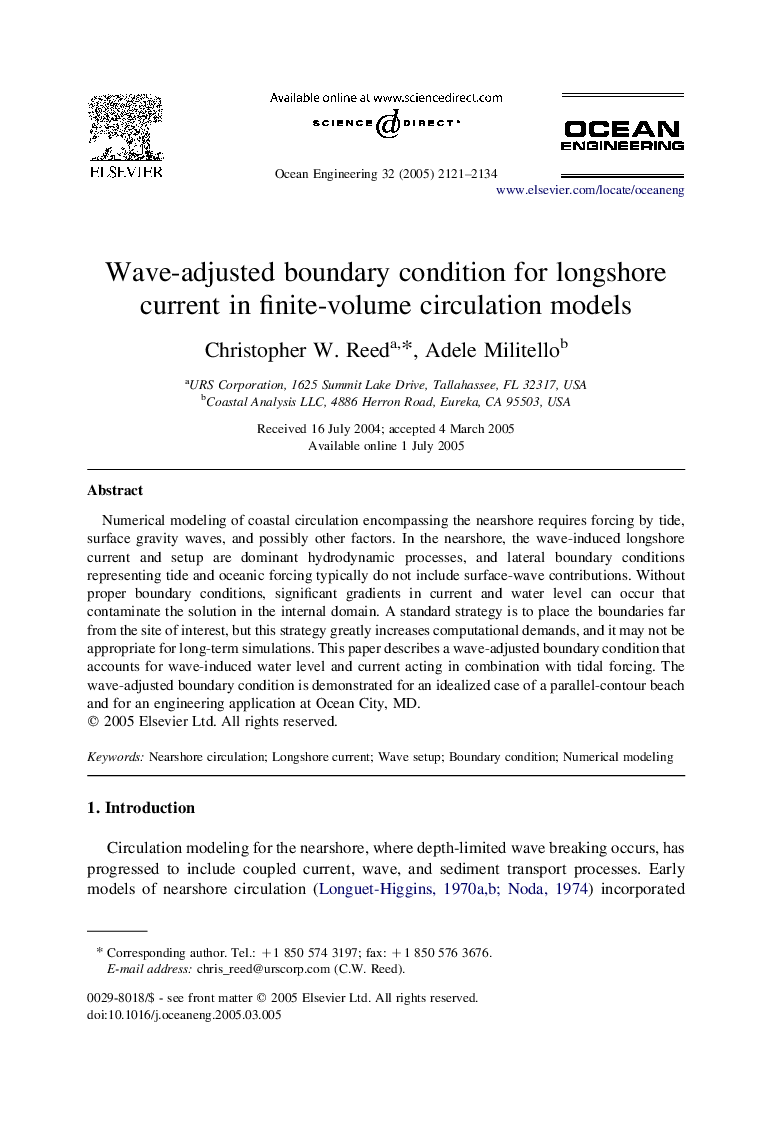| Article ID | Journal | Published Year | Pages | File Type |
|---|---|---|---|---|
| 1727710 | Ocean Engineering | 2005 | 14 Pages |
Abstract
Numerical modeling of coastal circulation encompassing the nearshore requires forcing by tide, surface gravity waves, and possibly other factors. In the nearshore, the wave-induced longshore current and setup are dominant hydrodynamic processes, and lateral boundary conditions representing tide and oceanic forcing typically do not include surface-wave contributions. Without proper boundary conditions, significant gradients in current and water level can occur that contaminate the solution in the internal domain. A standard strategy is to place the boundaries far from the site of interest, but this strategy greatly increases computational demands, and it may not be appropriate for long-term simulations. This paper describes a wave-adjusted boundary condition that accounts for wave-induced water level and current acting in combination with tidal forcing. The wave-adjusted boundary condition is demonstrated for an idealized case of a parallel-contour beach and for an engineering application at Ocean City, MD.
Related Topics
Physical Sciences and Engineering
Engineering
Ocean Engineering
Authors
Christopher W. Reed, Adele Militello,
